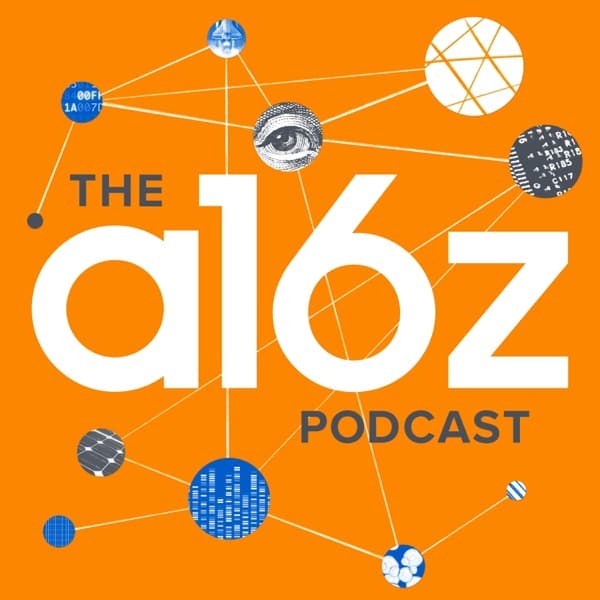Fireship: Anthropic released Claude 3.7, a powerful language model with new features for programming and a CLI tool called Claude Code.
a16z Podcast: The discussion explores the evolving role of AI in creative industries, emphasizing the shift from skill to taste as a differentiator and the potential of AI to enhance creative workflows.
Fireship - Claude 3.7 goes hard for programmers…
Anthropic has launched Claude 3.7, a large language model that has shown significant improvements in programming capabilities. It introduces a new 'thinking mode' inspired by Deep Seek R1 and includes a CLI tool named Claude Code. This tool allows users to build, test, and execute code within any project, potentially creating an infinite feedback loop that could replace programmers. Despite its high cost, Claude 3.7 has outperformed other models in solving GitHub issues, achieving a 70.3% success rate according to benchmarks. The CLI tool can be installed via npm and provides full context of existing code in projects, although it is expensive at $15 per million output tokens. The model has demonstrated proficiency in generating front-end UIs, although it has some limitations, such as not using specified technologies like TypeScript or Tailwind in certain scenarios. Additionally, it struggles with complex tasks like building encrypted apps, indicating room for improvement.
Key Points:
- Claude 3.7 introduces a CLI tool, Claude Code, for building and testing code, potentially replacing programmers.
- The model excels in solving GitHub issues, with a 70.3% success rate, outperforming other models.
- Installation of the CLI tool is via npm, but it is costly at $15 per million output tokens.
- Claude 3.7 can generate front-end UIs but may not always use specified technologies correctly.
- The model struggles with complex tasks like building encrypted apps, showing areas for improvement.
Details:
1. 📢 Exciting Release Announcement
- Anthropic has launched a new product designed to significantly enhance AI capabilities, signaling a major advancement in the industry.
- This release is anticipated for its innovative features, which could redefine AI applications.
- While specific metrics and impacts are pending, the industry is expecting substantial improvements in efficiency and functionality.
- The product is expected to cater to various sectors, potentially increasing AI integration in business processes.
2. 🎉 Claude 3.7 Sona: First Impressions
- Claude 3.7 Sona is highly anticipated in the tech community, reflecting its expected potential impact and advancements.
- The model is both loved and feared by programmers, indicating its powerful capabilities and the significant changes it might bring.
- The announcement video generated significant excitement and engagement, as shown by the top comment about people eagerly waiting for the video release, highlighting community buzz.
- The speaker feels honored by the community's trust in their AI reviews, which underscores their influence and credibility in assessing AI models.
- Despite the excitement, there is an underlying tension about the transformative changes Claude 3.7 Sona might introduce, suggesting a need for adaptation.
- The community's reaction is a mix of enthusiasm for new features and apprehension about the learning curve associated with the model's capabilities.
3. 🚀 Enhanced Programming Capabilities
- Claud 3.7 has undergone extensive testing, burning through millions of tokens to ensure performance.
- The new model, Claud 3.7, demonstrates significantly improved performance, often described as 'highkey goated,' indicating top-tier capabilities.
- The base model has surpassed its previous iteration, becoming even better at executing programming tasks.
4. 🛠️ Introducing Claude Code CLI
- Claude Code CLI is an innovative tool designed to enhance programming workflows by building, testing, and executing code across various projects.
- The tool fosters an infinite feedback loop, streamlining the development process significantly.
- Inspired by the success of deep seek R1 in open AO models, Claude Code CLI aims to replicate and extend these successes in programming environments.
- The CLI tool's architecture leverages insights from previous advanced models, suggesting a potential for transformative impacts on software development and code management.
5. 👨💻 AI's Role in the Workforce
- Influencers have raised concerns about AI potentially replacing programmers, reflecting a growing anxiety in the tech community.
- Anthropic's recent paper explores AI's influence on labor, suggesting that AI could significantly alter workforce dynamics, particularly in programming roles.
- The paper provides detailed analysis and metrics on AI's capabilities in automating coding tasks, which could lead to a shift in how programming jobs are structured and executed.
6. 🏆 Benchmarking Against Competitors
6.1. AI Models and Workforce Impact
6.2. Sector-specific AI Impact
7. 💸 Installing and Using CLA Code CLI
- The CLA code CLI claims to solve 70.3% of GitHub issues based on their Benchmark.
- The CLI is in research preview and can be installed using npm, though it utilizes the anthropic API, which is costly.
- CLA is over ten times more expensive than models like Gemini Flash and deepsea, with a cost of $15 per million output tokens.
- Upon installation, the CLA command provides full context of existing code in a project.
- Text decoration in the CLI closely resembles that of SST, an open-source tool.
- Installation steps: Use npm to install the CLI, ensuring that you have access to the anthropic API for full functionality.
- Usage example: After installation, run the CLA command in your project directory to analyze and provide context for existing code.
8. 🔍 Testing Code Generation Features
- The 'in' command efficiently scans projects to create a markdown file, setting initial context and instructions for development.
- Tracking expenses with the 'cost' command is precise, showing that creating an AIT file incurs a cost of approximately 8 cents, promoting cost-effectiveness.
- The task of creating a random name generator in Dino serves as a straightforward example of the system's capabilities.
- User control is prioritized with a confirmation step before any file generation, ensuring intentional actions.
- Testing involves creating a dedicated file to validate code using a strongly typed language and test-driven development principles, ensuring thorough verification.
- AI actively corrects code based on failing tests, using feedback to refine and improve reliability, demonstrating an adaptive and iterative development process.
9. 🎨 Building a Front-End UI
- The project involved creating a visual front-end UI using Svelte instead of React, focusing on accessing a microphone and visualizing the waveform.
- The tech stack included TypeScript and Tailwind, but issues arose when Claude's code did not utilize these technologies, impacting integration.
- Development required iterating through 20 different elements to refine business logic, achieving a 'perfect code' status, indicating high interaction and detail.
- The project was more time-consuming compared to traditional web UI development due to the complexity and new component additions.
- The final application featured interactive waveform frequency and a circular graphic visualizing voice sound, demonstrating comprehensive UI functionality.
- Comparative testing with AAI 03 mini High initially led to errors but was corrected, although results were not as favorable, highlighting integration challenges.
10. ⚠️ Challenges and Limitations
- The session using the new spell 5 Rune syntax cost about 65 cents, which was considered inefficient spending.
- Apple discontinued end-to-end encryption in the UK due to government demands for a backdoor, which they refused to build, leading to privacy concerns for users.
- Building a custom end-to-end encrypted app is a potential solution for those affected by Apple's decision, but it faces practical challenges.
- Large language models tested for building encrypted apps in JavaScript consistently failed, highlighting limitations in current AI capabilities for specific technical tasks.
- Despite modifications, AI solutions like Claud code and Chat GPT failed to resolve coding issues, indicating limits in their problem-solving abilities.
- There's a significant dependency on AI, leading to difficulties in addressing technical errors independently, which underscores the need for skilled human intervention in technical development.
11. 📈 Exploring Backend Solutions with Convex
- Convex is an open-source reactive database that enhances backend development with features such as typesafe queries, scheduled jobs, server functions, and real-time data synchronization, offering a comprehensive solution akin to Firebase.
- Developers can write database queries in pure TypeScript with Convex, which enhances productivity by providing IDE autocomplete and reducing coding errors.
- The integration with AI models like Claude improves coding efficiency, making Convex a powerful tool for autonomous development.
- Convex is particularly beneficial for developers transitioning from front-end to back-end development, as it allows for rapid application building through its familiar and simplified environment.
- By providing a free project initiation link, Convex encourages developers to explore its capabilities and discover its potential for simplifying complex backend tasks.
- Unlike traditional backend solutions, Convex offers a complete stack experience that integrates seamlessly with existing front-end workflows, enhancing developer efficiency and project turnaround times.
a16z Podcast - Creativity vs Control: Where AI Fits in the Creative Toolbox

The conversation highlights the transformative impact of AI on creative industries, suggesting that AI will lower the barriers to entry for storytelling and creative expression. Scott Belsky, a key figure in creative technology, discusses how AI is shifting from a prompt-based era to a controls era, allowing for more nuanced and personalized creative outputs. This shift is expected to democratize creativity, enabling more people to engage in storytelling and creative work without needing extensive technical skills.
Belsky also emphasizes the importance of taste over skill in the future, as AI takes over more technical tasks. He predicts that AI will enable creators to focus more on the flow of creativity rather than the work, enhancing productivity and innovation. The discussion also touches on the potential for AI to create personalized experiences and the challenges of integrating AI into existing creative workflows. Belsky suggests that AI will not replace human creativity but will augment it, allowing for more personalized and impactful creative outputs.
Key Points:
- AI is transitioning from a prompt-based to a controls-based approach, enhancing creative workflows.
- Taste will become more important than skill as AI handles technical tasks.
- AI will democratize creativity, allowing more people to engage in storytelling.
- AI will augment human creativity, not replace it, enabling more personalized outputs.
- The future of creative tools lies in integrating AI to enhance productivity and innovation.
Details:
1. 🎓 Navigating Learning Curves and the Power of Taste Over Skill
1.1. The Importance of Resourcefulness in Learning
1.2. Future Technological Interfaces
2. 📈 Creator Economy Challenges and the Quest for Magic
- Taste is predicted to outperform skill in the next decade, implying that creators who can curate and present content effectively will have a competitive edge.
- The creator landscape in 2025 is expected to be challenging due to increased saturation and competition, signaling a need for creators to differentiate themselves through unique value propositions.
- Building platforms for creators is increasingly complex, necessitating tools that can adapt to diverse, unpredictable, and personalized workflows.
- There is a significant demand for modern, intuitive, and seamless user experiences, suggesting that successful tools will offer innovative interfaces that enhance creator productivity.
- To address these challenges, platforms should focus on providing customizable and flexible tools that cater to individual creator needs while maintaining a high level of user experience.
3. 🎙 Scott Belsky's Journey: From Behance to Adobe's Strategy Chief
- Scott Belsky, who founded Behance, has accumulated over a decade of experience at Adobe, now serving as the Chief Strategy Officer, a role highlighting his strategic impact.
- Belsky has played a pivotal role in successful product innovations and strategic initiatives at Adobe, contributing to its growth and market leadership.
- His influence extends beyond Adobe, having advised major companies such as Pinterest and Atlassian, demonstrating his broad industry impact.
- Under Belsky's guidance, Adobe has enhanced its creative cloud offerings, leading to increased user engagement and retention.
- His strategic leadership has been instrumental in Adobe's successful integration of AI and machine learning in its products.
4. 🤔 AI's Transformative Role in Creativity and Personalization
- AI is transitioning from the prompt era to the controls era, offering more nuanced and precise creative tools, which allows creators to achieve a higher level of detail and sophistication in their work.
- The development of AI native UIs is crucial for enhancing creator interactions with AI, potentially leading to more intuitive and seamless integration of AI into creative processes.
- The ongoing debate between bespoke personalized experiences and the comfort of familiarity highlights the need for a balanced approach in AI-driven personalization, ensuring innovation aligns with user preferences.
- AI native UIs, such as Adobe's Sensei and Canva's AI-powered design tools, exemplify current advancements that make creativity more accessible and efficient.
- The personalization debate suggests that while AI can tailor experiences uniquely, it must also respect user comfort zones, indicating a strategic need to manage personalization levels carefully.
5. 🎧 Live from San Francisco: A Podcast Experience
- The podcast was recorded live during the fourth iteration of the A16Z Games speedrun program, showcasing the dynamic nature and interactions of the event.
- Interested individuals can visit a16z.com/games/speedrun for comprehensive information about the speedrun program, including objectives, participant details, and past highlights.
- Listeners are reminded that the content serves informational purposes only and should not be misconstrued as legal, business, tax, or investment advice.
6. 💡 Scott Belsky's Insights on AI, Creativity, and Business Evolution
6.1. Introduction and Background
6.2. AI and Creative Tools
6.3. Building for Creatives with AI
6.4. Adobe's AI Integration
6.5. AI’s Limitations in Creativity
6.6. AI in Marketing and Media
6.7. Bootstrapping Behance and Business Lessons
6.8. Navigating the Messy Middle
7. 🔮 The Future of Software: DIY, Personalization, and Generative UIs
7.1. Industry Evolution and Conviction
7.2. DIY Software Movement
7.3. Current State of DIY Software
7.4. Conformative Software
7.5. Personalized UI and the Role of AI
7.6. Strategic Recommendations for Product Builders
8. 🛠 Designing the Future: Personalized UIs and Voice Interfaces
8.1. Generative UI and Design Perspectives
8.2. Voice Interfaces and Consumer Experience
8.3. Augmented Reality and Future Interfaces
9. 🌐 AR, AI, and the Impending Tech Revolution
9.1. AI Model Economics
9.2. Future Opportunities in AI and 3D Creative Tools
10. 🚀 Investment Insights: Network Effects and Interface Dominance
10.1. Network Effects and Data Advantage
10.2. Interface Dominance
10.3. Successful Founder Behaviors
11. 🏢 Future Workspaces and Society in an AI-Driven World
- By 2025, AI is expected to revolutionize medicine, enhancing diagnostic capabilities beyond traditional methods with AI-augmented doctors.
- AI will provide managers with detailed insights into team performance, rendering non-AI management practices obsolete.
- Marketing and content production will modernize with AI-driven solutions, requiring a shift in agency operations.
- The concept of 'Cognicos' will emerge, where companies operate on AI-driven structures, guided by AI in areas like HR and marketing, focusing on objectives and compliance.
- AI will minimize the need for human labor in larger enterprises, promoting the growth of small, craft-oriented businesses, similar to Japan's non-scalable, experience-focused models.
- Routine tasks will be automated by AI, allowing humans to concentrate on creative, craft-oriented work, potentially driving a rise in small enterprises.
12. 🎤 Wrapping Up: Gratitude and Reflections
- The podcast team places significant effort into each episode, including guest selection, scheduling, and editing processes.
- Listeners are encouraged to provide feedback and share their favorite episodes at ratethispodcast.com/A16Z.
Included Channels
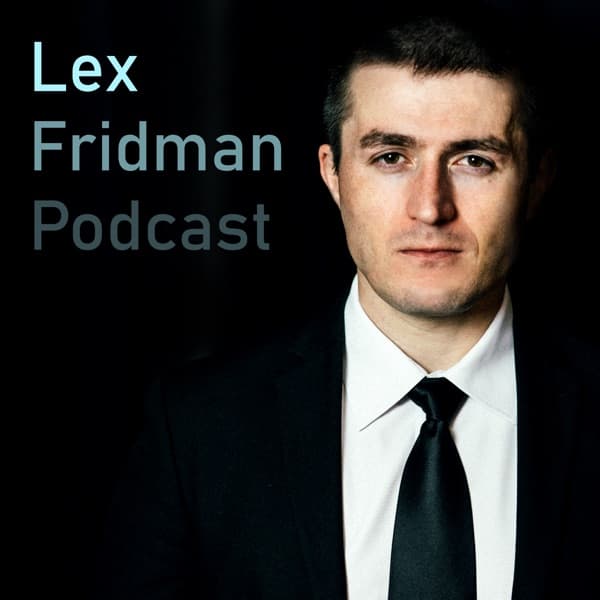 Lex Fridman Podcast
Lex Fridman Podcast All-In with Chamath, Jason, Sacks & Friedberg
All-In with Chamath, Jason, Sacks & Friedberg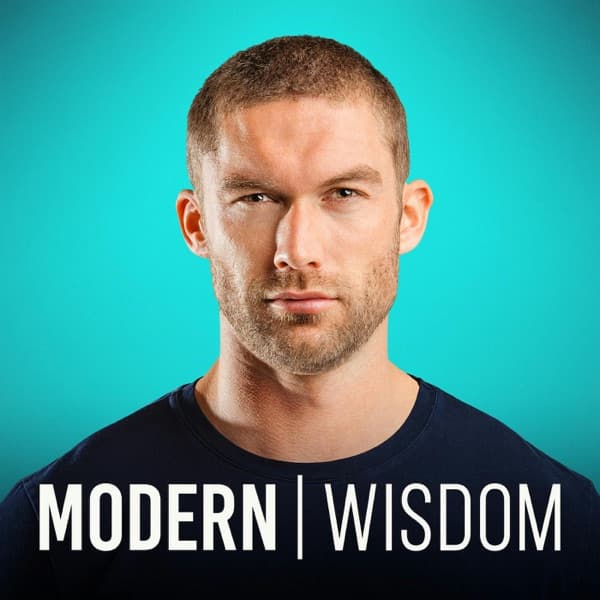 Modern Wisdom
Modern Wisdom Greymatter
Greymatter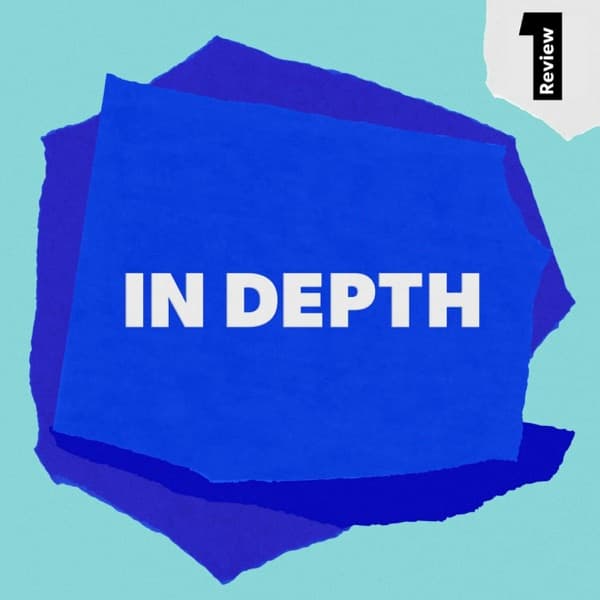 In Depth
In Depth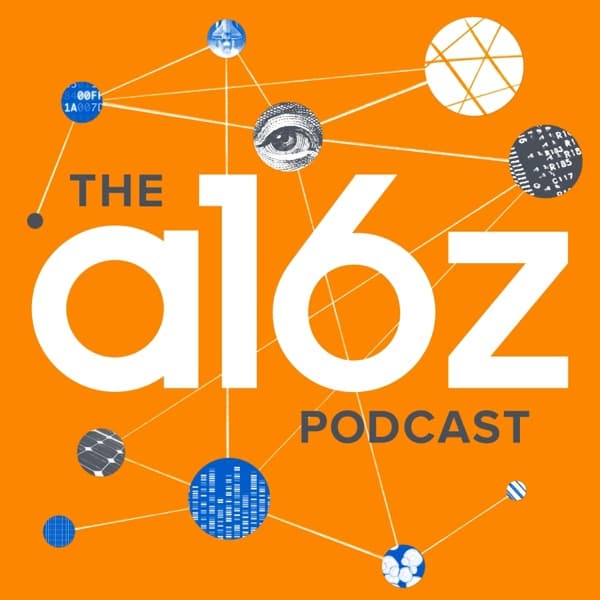 a16z Podcast
a16z Podcast Lenny's Podcast: Product | Growth | Career
Lenny's Podcast: Product | Growth | Career Lightcone Podcast
Lightcone Podcast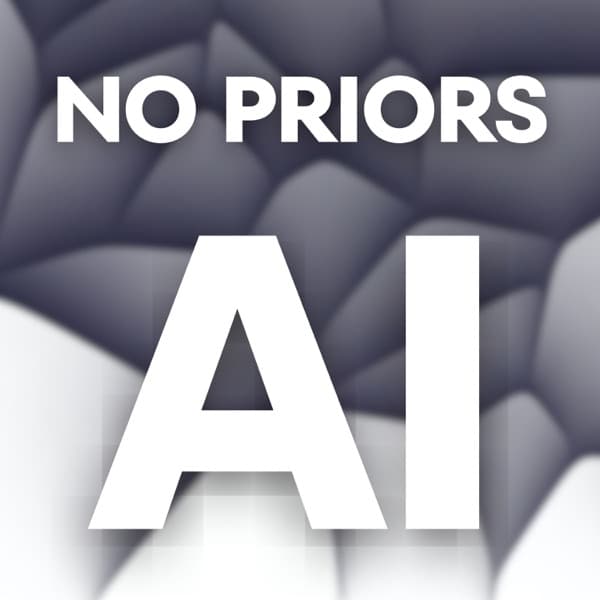 No Priors AI
No Priors AI The Twenty Minute VC (20VC): Venture Capital | Startup Funding | The Pitch
The Twenty Minute VC (20VC): Venture Capital | Startup Funding | The Pitch How I Built This with Guy Raz
How I Built This with Guy Raz BG2Pod with Brad Gerstner and Bill Gurley
BG2Pod with Brad Gerstner and Bill Gurley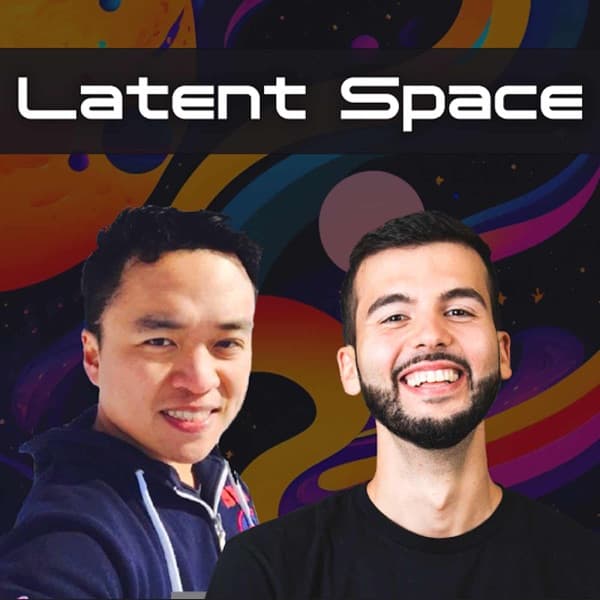 Latent Space: The AI Engineer Podcast
Latent Space: The AI Engineer Podcast